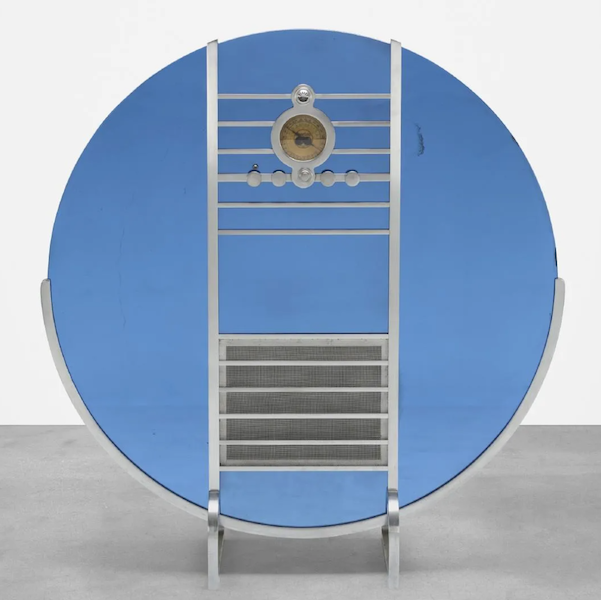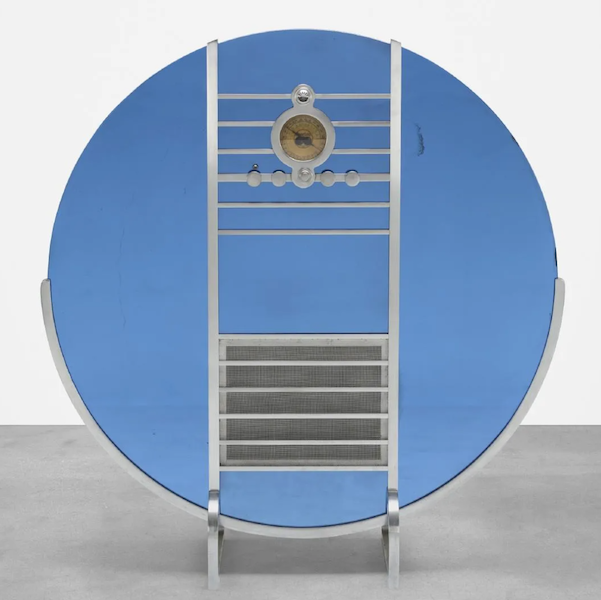
NEW YORK — Dubbed the dean of industrial design, Walter Dorwin Teague (American, 1883-1960) began his career in advertising and expanded into typography and commercial packaging before focusing on industrial design in the late 1920s. This proved to be a key time for the nascent field, as the United States would soon suffer severe economic hardship during the Great Depression. Companies needed to give customers reasons to buy their products, and they hoped industrial design would supply at least some of those reasons.
While engineers and inventors can envision mass-market consumer goods, Teague and his colleagues set themselves apart by designing products that look great and are easy to use. During his lengthy career, Teague worked with well-known companies such as Kodak, Texaco, Boeing, and Ford, designing some of the most well-known and commonly used products in his era.
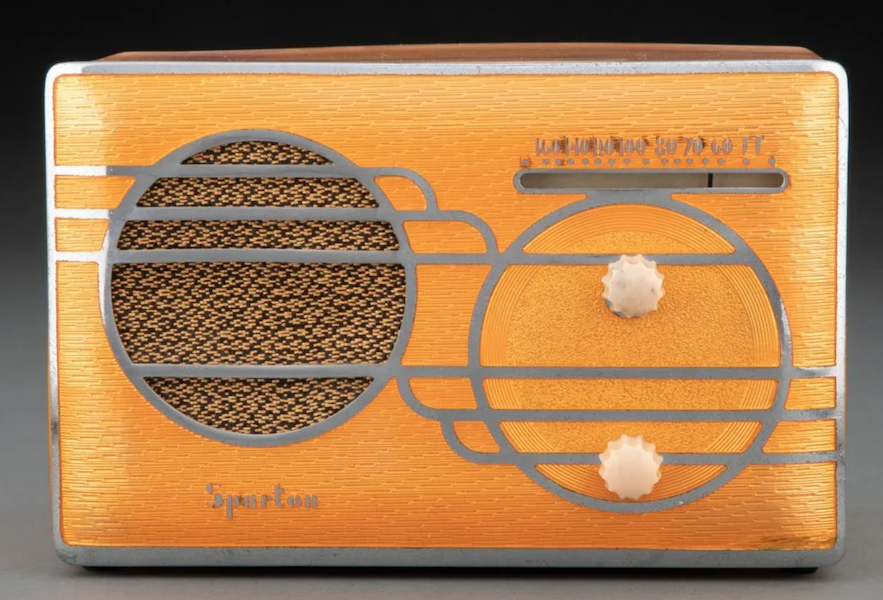
A popular tabletop radio from 1939 was this Walter Dorwin Teague 500C yellow Catalin Cloisonne creation that sold for $6,000 plus the buyer’s premium in June 2023. Image courtesy of Heritage Auctions and LiveAuctioneers.
“Walter Dorwin Teague was arguably the foremost industrial designer of the mid-20th century, establishing partnerships with leading manufacturers and lending his unique approach and aesthetic to a wide variety of consumer products, from radios and cameras to automobiles and airliners,” said Samantha Robinson, director of arts and design at Heritage Auctions. “His designs merged form and function in a moment of rapid technological and commercial expansion, and established many design principles and practices that continue to this day.”
While he worked on a wide variety of consumer products, he is perhaps best known for radios. “One of Teague’s most important clients was Michigan-based manufacturer Sparks-Withington, better known by its brand name Sparton. In 1935, Teague developed a series of mirrored radios released in Midnight Blue and Old Rose or peach colorways,” she added.
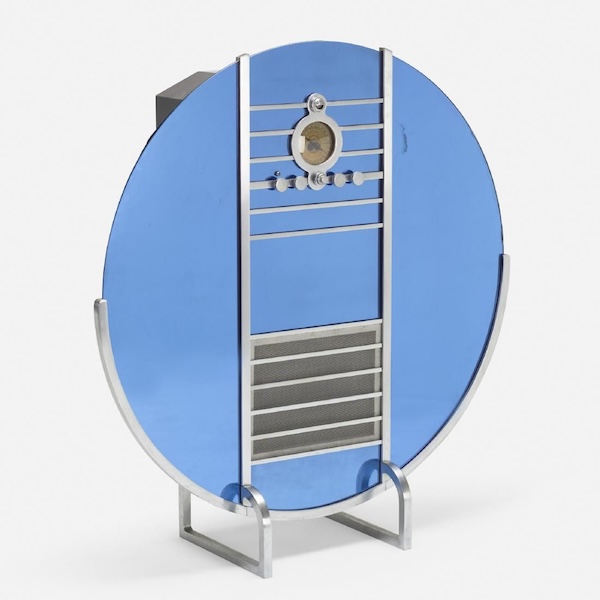
One of his most famous designs was his Nocturne console radio that employed blue mirrored glass over a plywood body with chrome-plated and lacquered metal trim work. According to the Dallas Museum of Art, this symbol of modernity, which stood almost four feet tall, “is the most monumental example of the Sparton Corporation’s mirrored radios.” While the design is striking, Sparton’s price tag of $350 put it out of the reach of most buyers, so only a few were produced. A circa-1935 example of a Nocturne radio, model 1186, in midnight blue glass, achieved $40,000 plus the buyer’s premium in June 2019 at Wright.
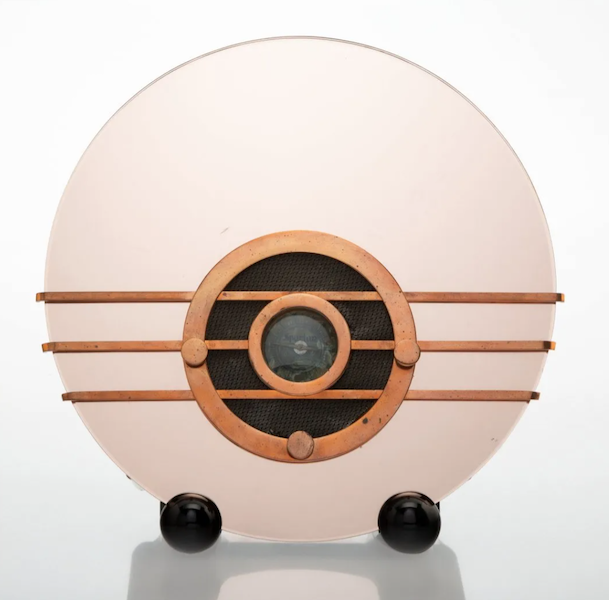
As part of this mirrored radio series, Sparton also released Teague’s design for a smaller tabletop radio having a rounded shape similar to the Nocturne, which was known as model 566. These were known as the Bluebird or the Peachbird, depending on the body color. (The latter hue was officially called Old Rose, but was later referred to as Peachbird.) It was never as popular as the Midnight Blue version, which meant that fewer were produced. An example of a Peachbird radio made $3,600 plus the buyer’s premium in April 2020 at Heritage Auctions.
A few years later, Sparton debuted Teague’s model 500c, also known as the Cloisonne radio, which Robinson described as “a Streamline Moderne masterpiece that combines metallic cloisonne, chrome, and catalin.” An example in yellow Catalin plastic, featuring metallic apricot cloisonne enamel and dating to 1939, brought $6,000 plus the buyer’s premium at Heritage Auctions in June 2023, selling well above its estimate of $2,500-$3,500.
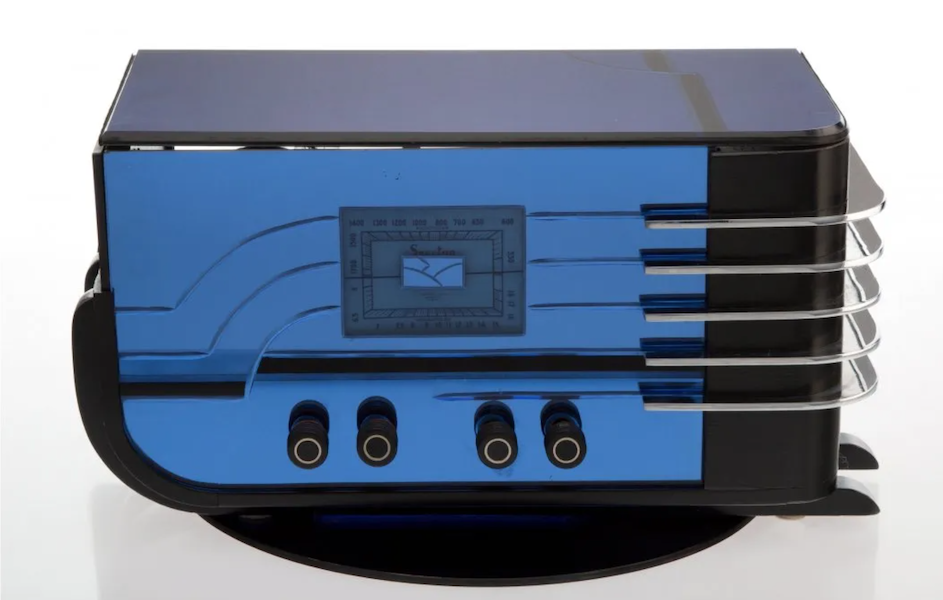
Another unusual and breathtaking form among his Sparton mirrored radios was the Sled, which was publicly introduced at a radio and electrical fair in New York in 1936. A slightly later version in Midnight Blue, dating to 1937-38 and designated as model 558, attained $2,200 plus the buyer’s premium in April 2020 at Heritage Auctions.
Teague’s first major commission was for Eastman Kodak in Rochester, New York, to redesign its 1A Gift camera. He began working for Kodak in 1928, and in 1930, the company released his updated version of this popular camera that transformed its plain black faceplate and carrying box. “Taking visual cues from Art Deco, a popular style in the late 1920s, Teague created a pattern of interlocking geometric shapes in black, brown, silver, and red, recalling the work of modernist painters, such as Mondrian,” according to the Metropolitan Museum of Art in New York. One of these models earned $2,200 plus the buyer’s premium in December 2023 at Wright.
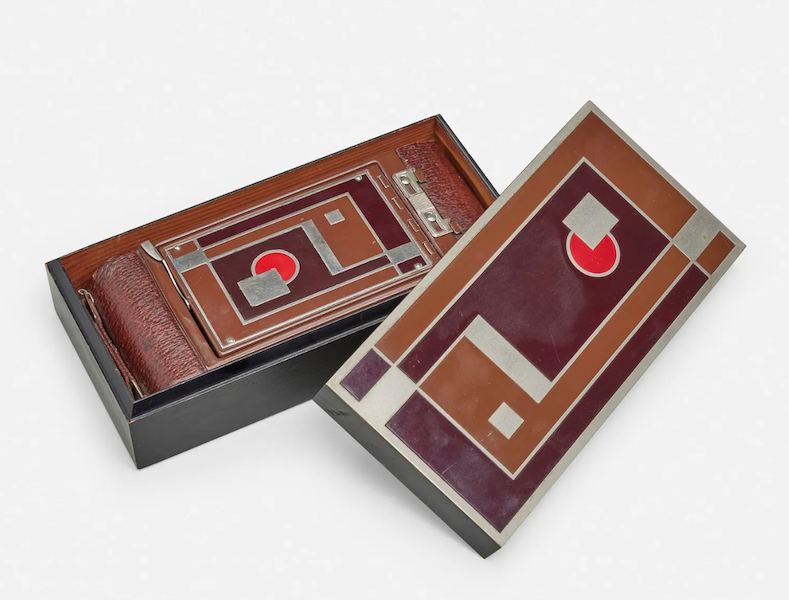
Walter Dorwin Teague’s first project for Eastman Kodak was redesigning its Model 1A Gift camera, for which he embraced an Art Deco aesthetic. This model earned $2,200 plus the buyer’s premium in December 2023. Image courtesy of Wright and LiveAuctioneers.
Ranking among the Big Four industrial designers (the others being Raymond Loewy, Henry Dreyfuss, and Norman Bel Geddes), the work of Walter Dorwin Teague typically performs well in auctions, with most examples either hitting or sailing past their estimates. “Consumer products designed by Teague such as Sparton radios, Kodak cameras, and Steuben and Libbey tableware, appear at auction fairly frequently. His radios, in particular, continue to attract collectors and command high prices,” Robinson said.
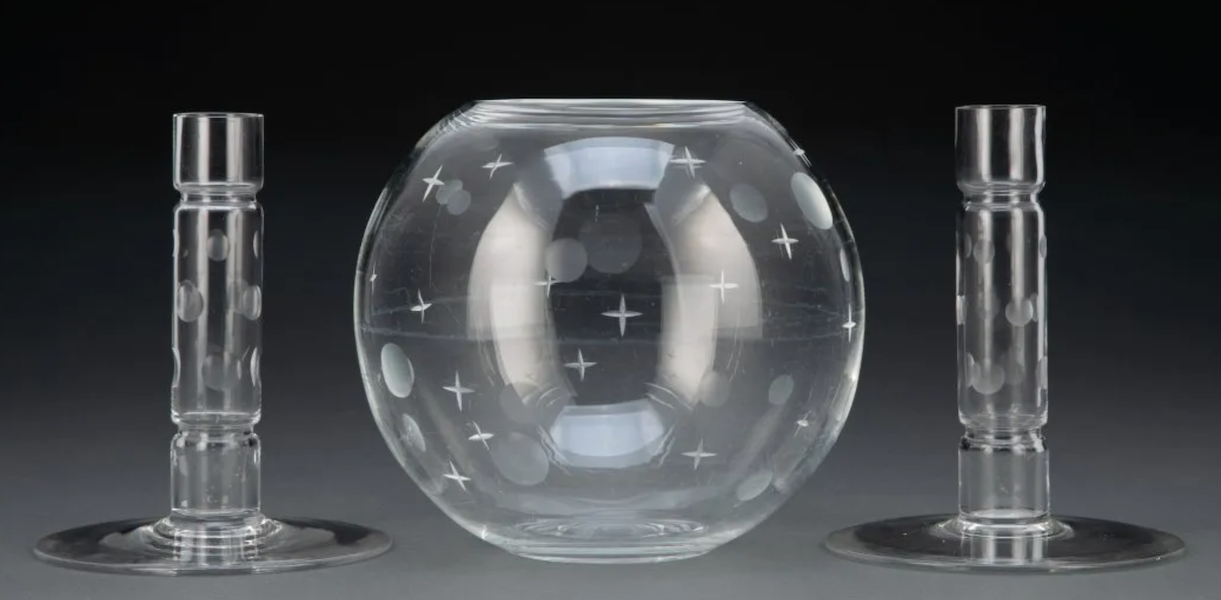
Another upstate New York firm that hired Teague was Corning Glass Works, which had its art glass division under the Steuben Glass name. The company contracted Teague after seeing the success Kodak had after his changes. Corning was led artistically by Frederick Carder from 1903 to 1932, and had successfully transitioned from Art Nouveau to Art Deco and Streamline Moderne wares as tastes changed, but it was looking to make big changes. “By the 1930s, the firm began to phase out colored glass and focus on highly refractive colorless glass achieved through a newly developed formula,” Robinson said. “It hired a team of designers, including Walter Dorwin Teague, to develop shapes and acid etched and engraved surface patterns.” Teague designed a three-piece glass console set for Steuben, and one such set commanded $6,000 plus the buyer’s premium in September 2022 at Heritage Auctions. “This rare three-piece console set, consisting of a spherical bowl and two candlesticks, demonstrates Teague’s predilection for simple geometric forms and sparse decoration,” she added.
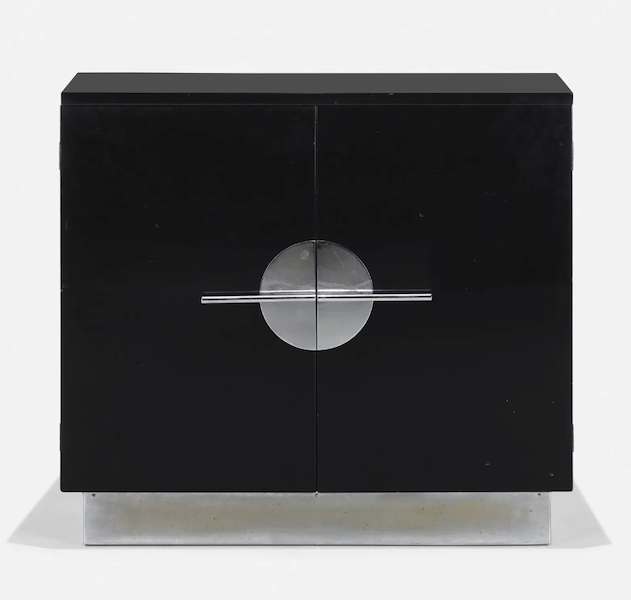
This Walter Dorwin Teague black lacquered cabinet realized $3,000 plus the buyer’s premium in January 2023. Image courtesy of Wright and LiveAuctioneers.
Among his furniture designs is a Machine Age cabinet that is not attributed to Hastings but strongly resembles pieces Teague designed for the Grand Rapids, Michigan company. They were produced in lacquered as well as burled wood, and one circa-1935 cabinet in black lacquer realized $3,000 plus the buyer’s premium in January 2023 at Wright. That particular cabinet, having chrome-plated steel hardware, featured two doors concealing a shelf and drawer.
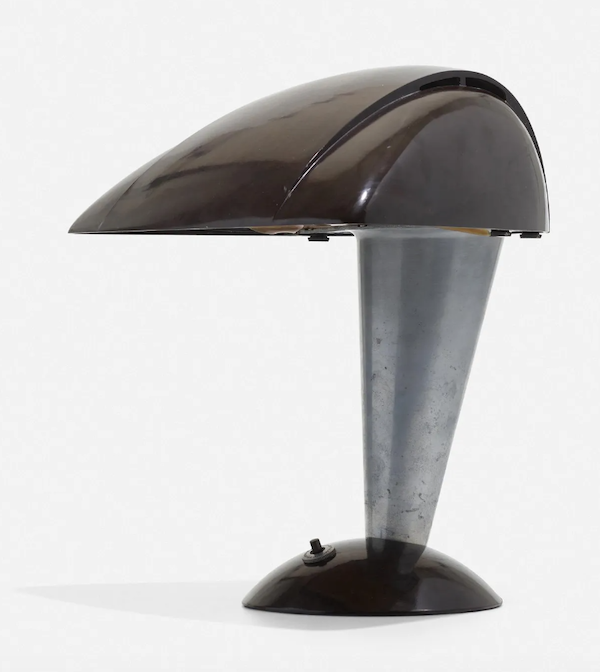
Teague won renown for his modern designs for the home furnishings market as well. A standout among his contributions to lighting was his sleek model 114 desk lamp, designed for the Polaroid Corporation. Made in Bakelite and aluminum, a circa-1939 example standing slightly more than a foot tall lit up the auction block at $1,600 plus the buyer’s premium in September 2021 at Wright. While Teague radios typically start at several thousand dollars each, this prize is within the reach of new collectors.
Walter Dorwin Teague’s innovative designs still look as if they were designed last week, though they are decades old. Their allure is almost certain to draw generations of collectors yet unborn.


